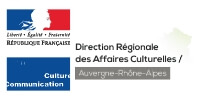Creativity leads to what is called an invention or a discovery (terms generally related to science), an innovation (which is intended to apply to the functioning or organization of human society) or an artistic creation (which relates to human culture).
It is also said that creativity is the mother of creation or the driving force behind art and science. The best definition is undoubtedly “the ability to produce something new that has value.”
These three “applications” (invention, innovation, creation) have common characteristics:
Creativity is also a valuable tool in education and integration.
NB: This note is largely inspired by the book by Pierre-Michel Menger, Professor at the Collège de France and holder of the Chair of Sociology of Creative Work: “Le travail créateur. S’accomplir dans l’incertain” Éditions du Seuil 2009. We are very grateful to Professor Menger to have shared views on his books and on this note with us.
They support
the association



©2024 Association des Amis de la Fondation Seguin – Legal notices – Privacy policy – A Tout Simplement Digital achievement